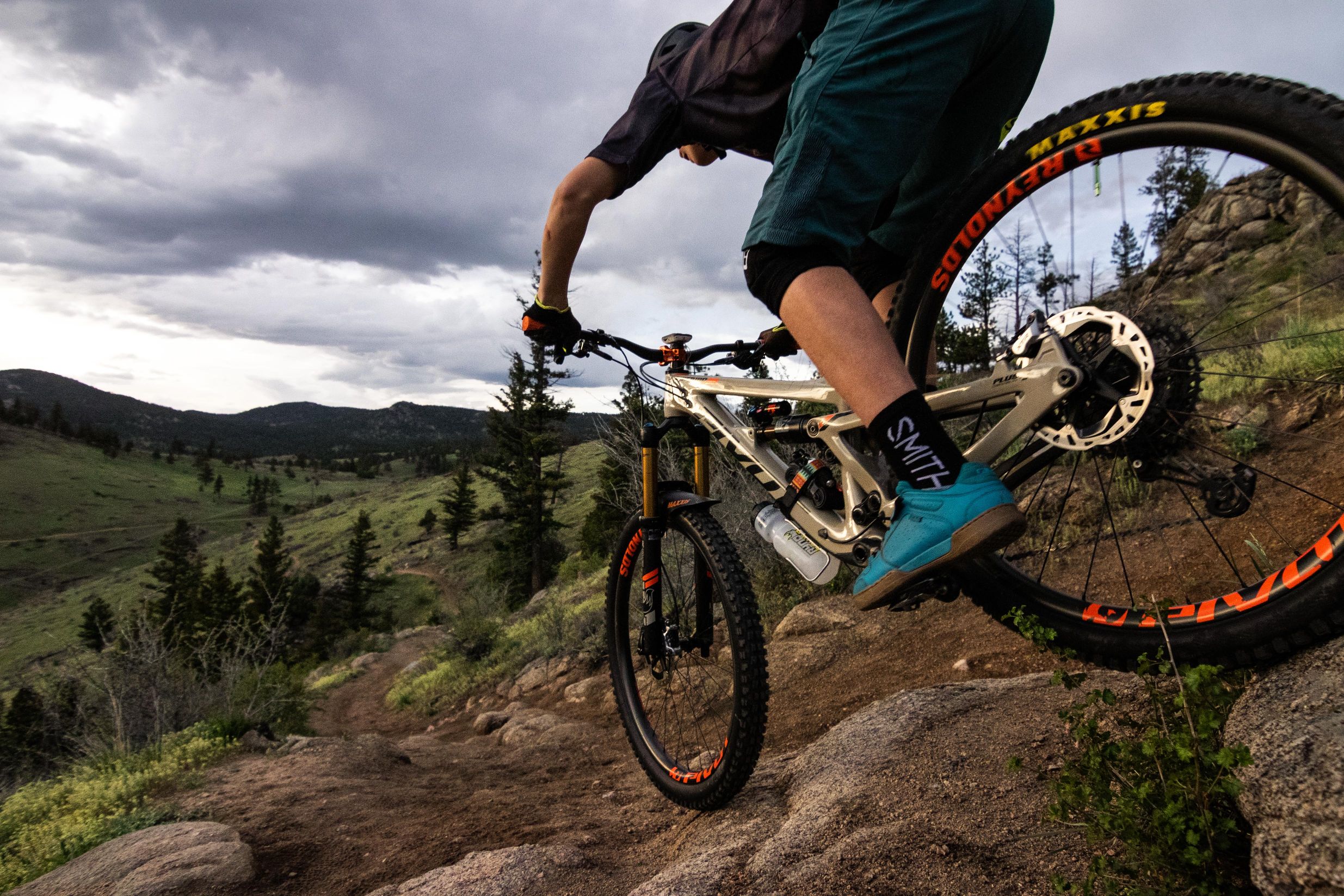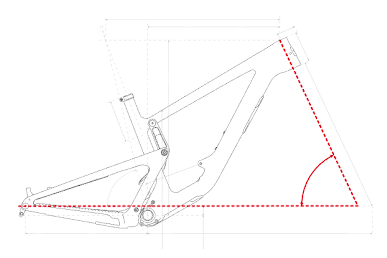
Geometry. It has been a buzz word in mountain biking for many years. One of the biggest innovations in mountain biking has been the refined geometry that allows us to ride faster and further with less effort.
But what is geometry?
It is a list of angles and numbers that dictate the construction and design of a frame, and add up to the way a bike fits and handles for the rider. While every measurement of a bike ultimately affects bike-feel, we have picked the five most prevalent measurements and broken down their specific impact on the riding experience.
1. Head Tube Angle: Steep or Slack
This is perhaps the most-talked-about geometry number, and for good reason. The head tube angle has a significant impact on the way a bike steers. The steeper the head tube angle, the closer the front wheel will be to the rider. This results in quicker steering through the handlebars; an asset at predominantly slow speeds – but this quickness can become a detriment at downhill speeds, where the bike may start to feel unstable as steering input becomes magnified.
The more relaxed or “slacker” the head tube angle, the further the front wheel is pushed out in front of the rider. This makes for slower steering at the handlebars – a phenomenon most pronounced at slow speeds. This sluggishness, however, diminishes at faster speeds. At climb speeds, a steep headtube angle is an asset, and at descent speeds a slack angle is better. As a rider, one has to choose where they wish to strike the balance between climbing agility and downhill stability.


2. Chainstay Length: Short or Long
Chainstay length is the distance from the middle of the bottom bracket to the center of the rear axle. Chainstay length tells you whether the rear wheel is tucked in tightly or if it sticks out further behind the rider. Short chainstays put the rear wheel right underneath the rider, resulting in quicker handling. Short chainstays also make wheelieing and manualing easier. Long chainstays mean the rear wheel extends further back behind the rider; this is great for high speed stability but makes maneuvering through tight turns at low speeds more difficult.
3. Stack: Think of Your Back
Stack height is measured as the distance from the top of the head tube to the middle of the bottom bracket. It is essentially a measurement of how tall the front end of your bike is. If you like to be upright or have a bad back, this is an important measurement. The taller the stack height, the higher your handlebars will be. The shorter the stack length, the lower your handlebars will be.


4. Reach: Short or Long
Unfortunately, reach does not describe how far you reach on your bike. (For that, we usually defer to effective top tube length). Instead, reach measures how long the bike is from the center of the bottom bracket to the center of the head tube. Much like head tube angle, reach tells you whether the bike will steer slower or quicker.
A longer reach means the bike will be very stable at high speeds but harder to get around a tight switchback. A shorter reach means that tight sections of trails are easier to maneuver but you sacrifice some stability. One thing to note is that steep seat tube angles can artificially make reach numbers longer because more of the bike is shifted in front of the bottom bracket. Be careful to keep seat tube angle in mind when comparing the reach between bikes.
5. Bottom Bracket Height: High or Low
Bottom bracket height is measured from the ground to the center of the bottom bracket. This measurement is important in two distinct ways: The first is simply ground clearance. The higher the bottom bracket, the more ground clearance you have when pedaling. This means fewer pedal strikes and better technical climbing. The second, more nuanced way the bottom bracket height affects a bike’s ride is its influence on a rider’s center of gravity. The lower the bottom bracket height, the lower the center of gravity, and more stability when descending. If the bottom bracket height is too tall, then you can have a “teeter-totter” feel, and the bike can feel unstable when things get rough.

All of these aspects of your bike’s geometry will play into how it feels on the trails. As with other aspects of mountain biking, your preferred geometry is subjective and depends entirely on your build, your riding style, and where you spend the most time riding your bike.
Questions about geometry? Don’t hesitate to ask our team the next time you’re in the shop.
